How to Care and Feed Hydrangeas
Knowing when and how to fertilize your hydrangeas can certainly make a huge difference in both the quality of their bloom cycle, and the overall amount of blooms that can cover the plant.
When it comes to perennial flowering shrubs, it is hard to beat the incredible hydrangea! With massive blooms and bright, colorful foliage, it is a popular choice among gardeners. And can they ever fill a space with interest!
Add in the hydrangea's ability to grow in a wide range of climates (growing zones 3 – 7), and its easy to see why they grace the landscapes of so many homes.
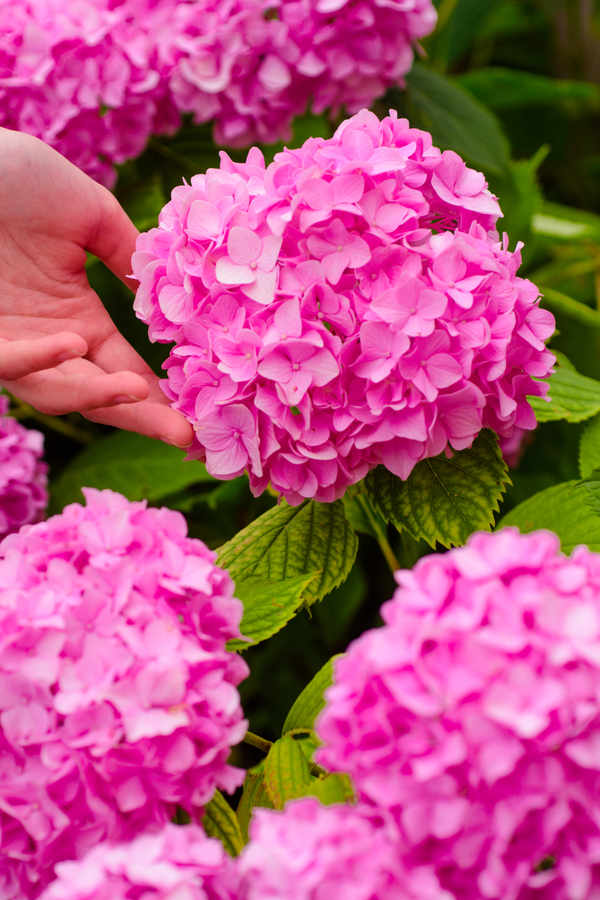
But as popular as the hydrangea is, it is also one of the most misunderstand plants around. In fact, it has certainly frustrated many a gardener when it comes to getting them to bloom consistently, year after year.
The good news is that with just a few simple hints and tips, getting your hydrangeas to bloom on cue is actually a fairly easy process. With that in mind, let's take a look at the basics of hydrangea care, including when and how to fertilize them for amazing blooms!
The Simple Keys To Big Blooming Hydrangeas
Getting your hydrangeas to bloom strong and consistently all starts with knowing what type of hydrangea you have. Different types of hydrangeas require different care, especially when it comes to pruning.
As you will see below, that is often the biggest issues when it comes to blooms that are weak, or fail to appear at all.
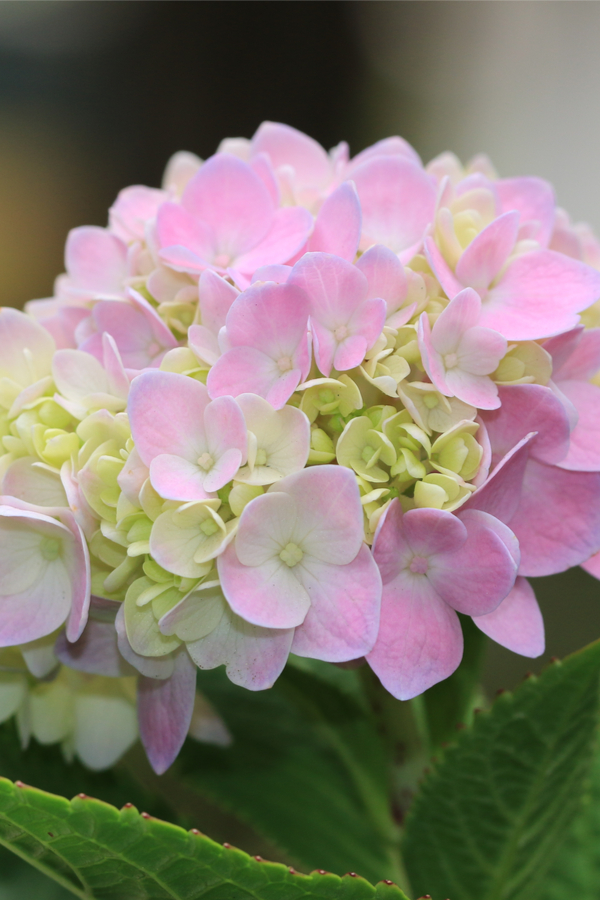
Once you know the type of hydrangea you are growing, it makes maintenance a breeze. You will know exactly when to prune it back, and even more, when to provide it with a few key boosts of fertilizer to promote big blooms!
Knowing Your Hydrangea Type…
It is important to first note that quite often, a hydrangea struggling to bloom might have nothing to do with the soil quality or lighting. Or, how you water or fertilize it for that matter.
The simple fact is, if planted in the proper light and in average to good soil, hydrangeas will normally bloom without difficulty. So why do so many have trouble getting them to bloom or bloom regularly?
Believe it or not, and more often than you would think, when hydrangeas lack in flower power, it is usually because they are being pruned at the incorrect time.
When To Prune – How To Fertilize Hydrangeas For Bigger Blooms
Late Spring / Early Summer Blooming Hydrangeas – What To Do With Hydrangeas After They Bloom
Many hydrangea varieties need to be pruned right after they complete their blooming cycle. Bigleaf, Oakleaf and even climbing hydrangeas all fit into this category.

They all produce the next year's flowers on the growth that occurs after they bloom. That means if you prune late or cut them back in the fall, you also are cutting of next year's flowers.
Late Summer / Fall Booming Hydrangeas – What To Do With Hydrangeas After They Bloom
Smooth or Panicle varieties on the other hand grow on new growth in the same year. Since they bloom in late summer, you can prune these in late winter or very early spring. The key with these varieties is to prune before they grow again in the spring.
One final note on pruning before we move on to fertilizing. Less is more when it comes to cutting back hydrangeas. They actually do not require heavy pruning to keep blooming. Pruning is best performed only to hold shape and keep the bushes from becoming overly large. See: Fall Hydrangea Care
Fertilizing
So now it all comes down to giving your hydrangeas the power and nutrients they need. Fertilizing that not only help them to survive, but thrive!
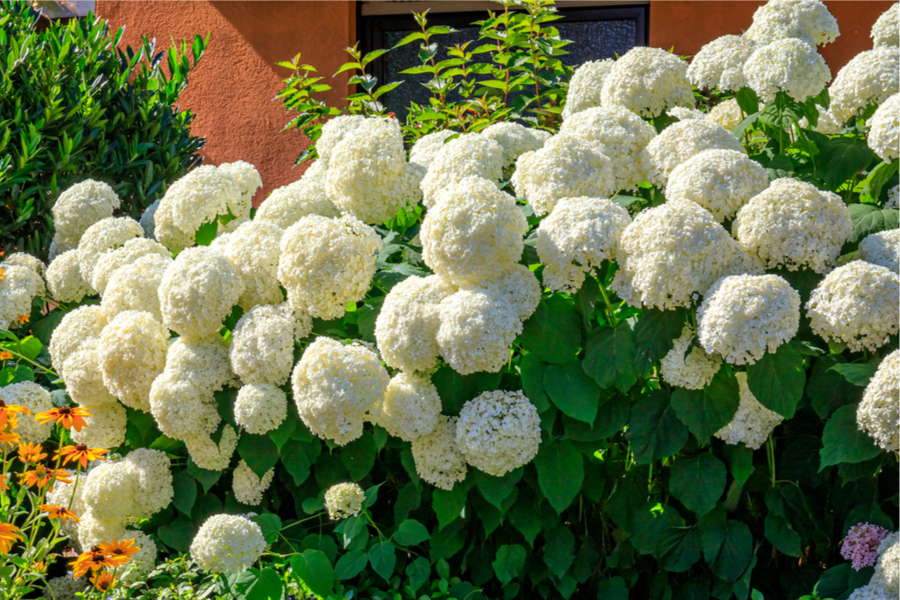
Fertilizing will improve both the power and intensity of your blooms, especially when you apply it at the right time. For best results, hydrangeas need fertilizing at two critical times. The first is just before or as they are coming out of dormancy in early spring.
The second time to fertilize your hydrangeas is right before they begin to bloom and flower. But here is the real key to success – each time frame calls for a different type and method of fertilizing for best results. With that in mind, here is a look at both:
Early Spring Fertilizing
Fertilizing in the early spring helps a hydrangea to green and power up for the season. This fertilizer needs to be a low and slow type that feeds the bush at a steady pace.
Accomplishing this can be done in several ways, either with a heavy top dressing of fresh compost, or by using a good, all-purpose slow release granular fertilizer at the base of the plant. Product Link : Lilly Miller All Purpose Growing Food 10-10-10
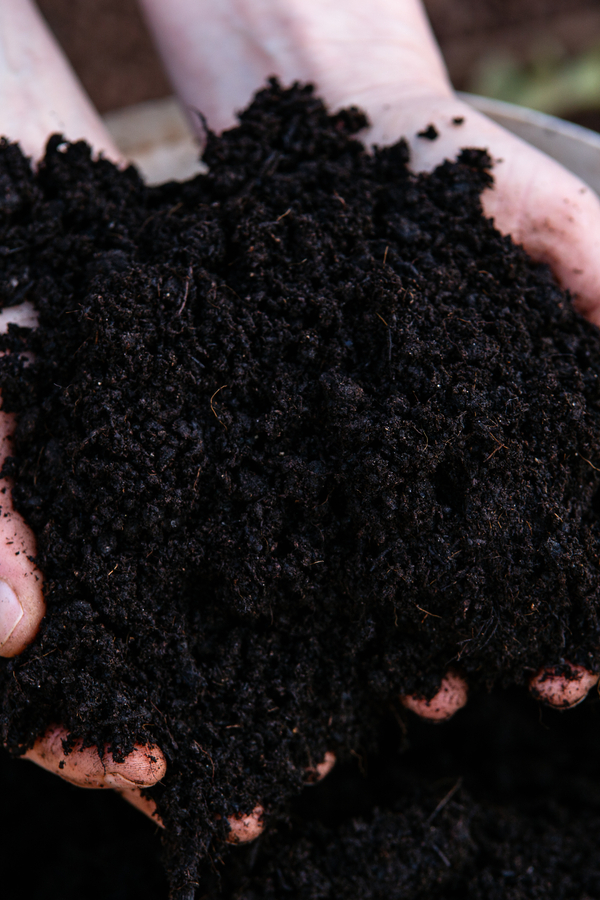
Both act to slowly release nutrients into the soil below. This slow pace is perfect for steady growth, which is also very important to help and spur on the upcoming bloom cycle.
If you were to use too powerful of a fertilizer, or one that did not slowly release its nutrients, it can create too much foliage growth. Unfortunately, with all of the power going to growing leaves, little remains for bigger blooms.
Fertilizing Before They Bloom
The second time a fertilizer should be used on hydrangeas is right before they bloom. Again, when they bloom will depend on what type you are growing, so that will play into the picture.
If your hydrangeas bloom in late spring and early summer, you want to give the second dose just before they unfold their blooms. The same goes for those that bloom in late summer / early fall – once again giving them their second dose just as they begin to flower.
This dose of fertilizer for this will be different than the initial spring slow and low dose. Instead of a balanced 10-10-10 style, you will want to apply a fertilizer that contains a higher level of phosphorous in the ratio.
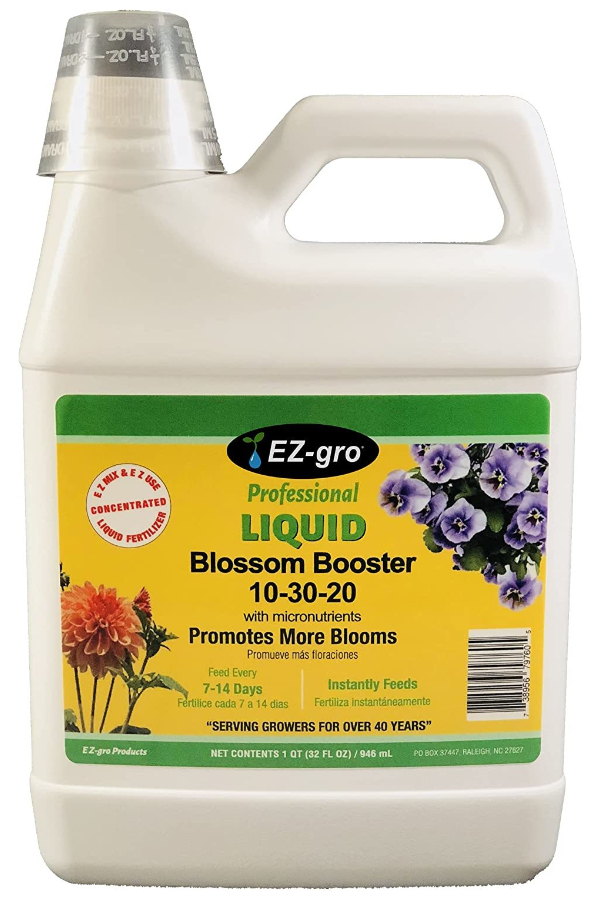
Phosphorus is a key element for bloom power. And supplying this right as the plant goes into bloom will increase the overall performance of your hydrangea's flowering cycle. A 10-30-20 (N-P-K) ratio works incredibly well at this point. Product Link : Bloom Booster Liquid Fertilizer
It still provides adequate nitrogen and potassium, but the increase in phosphorous will help for bigger, brighter blooming. When applying this, water the fertilizer in well to the soil to speed the process of absorption.
Big Blooms Forever – How To Fertilize Hydrangeas
The one-two fertilizing punch in early spring and before your hydrangeas bloom will work wonders in producing heavy flowers. And with each passing year, it will continue to work even more as the plant builds lasting strength.
One of the biggest keys of all is to stay the course. The more consistent you are in giving your hydrangeas the food they need, the more you will be rewarded with beautiful blooms. Here is to getting the most from your hydrangeas this year!
This Is My Garden is a garden website created by gardeners, for gardeners. We publish two articles every week, 52 weeks a year. Sign up today to follow via email, or follow along on Facebook here : This Is My Garden. This article may contain affiliate links.

Source: https://thisismygarden.com/2022/03/how-to-fertilize-hydrangeas/
0 Response to "How to Care and Feed Hydrangeas"
Postar um comentário